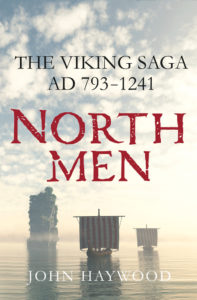by John Haywood
The Wendish Crusade
In 1144, the crusaders lost the key city of Edessa in Syria to the Turks. Pope Eugenius III’s response to this setback was to call the Second Crusade, the first major crusading expedition to the Holy Land since Jerusalem was captured in 1099. The main expedition, led by kings Louis VII of France and Conrad III of Germany, was directed at the Turks (and was a disastrous failure). But Eugenius widened the concept of the crusade by offering the same spiritual incentives to knights from northern Germany who wanted to launch a campaign against the pagan Wends of the southern Baltic region.
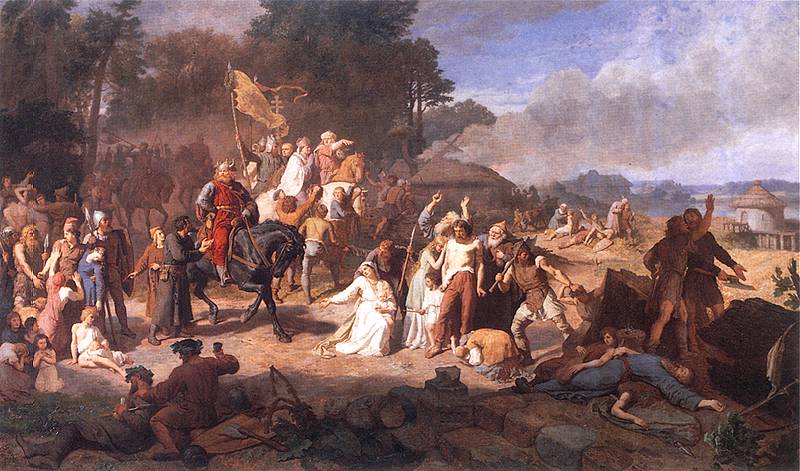
In this way the crusading movement was co-opted to support German territorial expansion in Eastern Europe. The calling of a crusade against the Wends found an immediate response from the Danes, who for well over a century had suffered from devastating Viking-style raids by Wendish pirates. Coastal areas had been depopulated, churches built to double as refuges for the local population, and fjords blocked with stake barriers to keep pirate ships out: Wendish slave markets were said to be full of Danish captives for sale. Occasional Danish retaliatory attacks had made little impact and many Danish islands now paid tribute to the Wends in return for peace.
The Crusade Begins
From the start the Wendish Crusade suffered from divided leadership and while the German contingent enjoyed modest success, the Danes were defeated. It was not until 1159 that the Danes finally enjoyed a major victory, when the young Valdemar the Great (r. 1157–82) flexed his military muscles and led a successful Viking-style raid on the Wendish island of Rügen. Valdemar’s success convinced the powerful Saxon duke Henry the Lion that he would make a useful ally in combined operations against the Wends, with the Saxons attacking them by land and the Danes attacking from the sea.
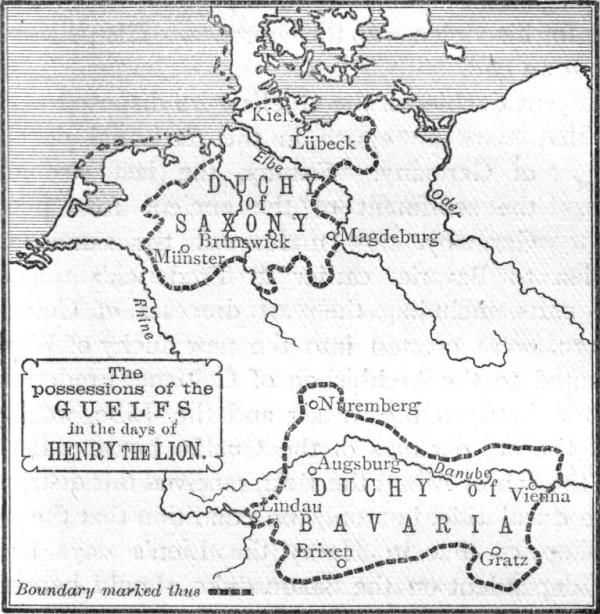
After joint victories in 1160 and 1164, the alliance fell apart as the two rulers quarreled over the spoils and thereafter regarded each other as rivals. But by this time Valdemar no longer needed Henry’s support. Valdemar’s tactics against the Wends were an almost seamless continuation of those used by the Vikings. Raiding parties made surprise landings from fleets of longships, sweeping quickly inland to plunder and return to their ships before the Wends could organise resistance. One departure from Viking traditions was that each longship carried four horses so that armored knights could join the raids. Although they could not take the strongly fortified Wendish towns, the Danes brought them to their knees through economic warfare, burning crops and villages, taking livestock and captives, and by preying on Wendish merchant shipping. These tactics had the great advantage of being very profitable.
The Vikings Encounter Resistance
Wendish retaliation was blunted by constructing castles at strategic locations on the Danish coast and by mounting naval patrols to look out for approaching pirate fleets. In most of his campaigns, Valdemar was accompanied by Absalon, the warlike bishop of Roskilde, who is best known today as the founder of Copenhagen. Absalon took great pleasure in destroying the idols of the Wendish gods. To demonstrate their powerlessness, but religion was a secondary concern for Valdemar: his main aims were to seize plunder and territory, and end Wendish pirate raids on Denmark.
Decisive success came in 1168, when Valdemar plundered and burned the cliff-top sanctuary of the Wendish high-god Svantovit at Arkona on Rügen. The shocked Rugians surrendered, accepted Danish rule and submitted to baptism. Now joined by the Rugian fleet, the Danes destroyed the Liutizian pirate stronghold of Dziwnów on the island of Wolin near the mouth of the Oder in 1170, so removing another threat to their security.
After the Danes defeated a Wendish pirate fleet in a sea battle off the island of Falster two years later, Wendish pirates never ventured into Danish waters again. By 1185 the Danish tactic of devastating Viking-style raids had forced the submission of the Liutizians and the Pomeranians to give them control of the entire Baltic Sea coast from Rügen east to the mouth of the River Vistula. Conquest was not followed by military occupation or settlement, how- ever. The Wends simply became tributaries of the Danes, who counted on the threat of punitive raids to keep their vassals loyal.
The Livonian Viking Crusades
Crusading in the Baltic region received a new impetus in 1193, when pope Celestine III called for a crusade against the Livonians, a group of tribes who lived in what is now Latvia and Estonia. The papacy’s motive in this crusade was not simply the conversion of pagans, it was also to prevent the area coming under the influence of what it saw as the heretical Orthodox Church. The Livonian Crusade was dominated from the outset by German crusading orders such as the Livonian Knights, the Sword Brothers and the Teutonic Knights, but the Danish king Valdemar II (r. 1202–41) saw an opportunity for territorial expansion and in 1218 he won full papal blessing for an invasion of Estonia.
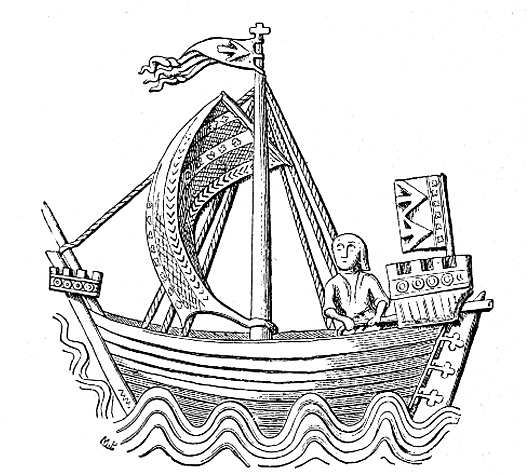
Valdemar landed at the Estonian trading place of Lyndanisse (modern Tallinn) in June the next year with a fleet of 500 longships. Longships were becoming decidedly old-fashioned by this time and this was probably the last occasion that they were used on such a large scale in the Baltic. Apart from the adoption of the stern-post rudder in place of the less-effective side rudder, longships had changed little since the Viking Age and they had long exhausted their development potential. German crusaders were now sailing the Baltic in cogs, a type of ship that probably originated in Frisia in the Viking Age. Unlike longships, cogs had no oars and relied entirely on a single square sail. Though they could not compete with longships for speed and maneuverability, cogs were sturdy and seaworthy, with broad, deep hulls and high sides, and were cheaper and easier to build.
The Cog Ships Become a Vital Trade Vehicle
Cogs were first built to carry bulky cargoes – even the smallest cogs could carry twice the 20-ton cargo of a Viking knarr – but they proved surprisingly well-suited to war. Especially when fitted with wooden fighting platforms at the bows and stern, cogs towered over longships, giving their crews a clear advantage in a sea battle. Scandinavian technological conservatism helped the German-dominated Hanseatic League of mercantile cities – early adopters of the cog – to supplant the Scandinavians as the main trading and naval power in the Baltic in the course of the thirteenth and fourteenth centuries. Scandinavians continued to build longships for the coastal defense levy fleets until the early fifteenth century, but their ineffectiveness in battle against cogs had been demonstrated many times by then.
It is thought that Valdemar set up camp on the Toompea, a steep- sided flat-topped hill rising around 100 feet (30.5 m) above the harbor at Tallinn, giving excellent views over the sea and low lying coast-lands. As well as being a good defensive position, the hill had religious significance to the Estonians, who believed that it was the burial mound of their mythological hero Kalev. Apparently overawed by the strength of Valdemar’s fleet, the Estonian chiefs agreed to submit and a few even allowed themselves to be baptized. However, this was all a ruse to lull the Danes into a false sense of security and the Estonians achieved complete surprise when they attacked the Danish camp a few days later.
The Battle of Lyndanisse
The battle of Lyndanisse achieved legendary stature in Danish historical traditions as the place where the country’s national flag, the Dannebrog, fell from Heaven as a sign to encourage the embattled Danes to fight on and overcome the pagans. Some historians have tried to rationalize this story, explaining it away as the sighting of an unusual weather phenomenon, but it is more likely to be pure fiction. The legend cannot be traced back any earlier than the sixteenth century, and the earliest known the use of the Dannebrog dates only to 1397, nearly 200 years after the battle. After his victory, Valdemar built a castle on the Toompea which, despite being incomplete, held out against an Estonian siege in 1223. It is from Valdemar’s castle that Tallinn’s name is derived, from Taani-linn, meaning the ‘Danes’ castle’: rebuilt many times, it now houses the Estonian parliament.
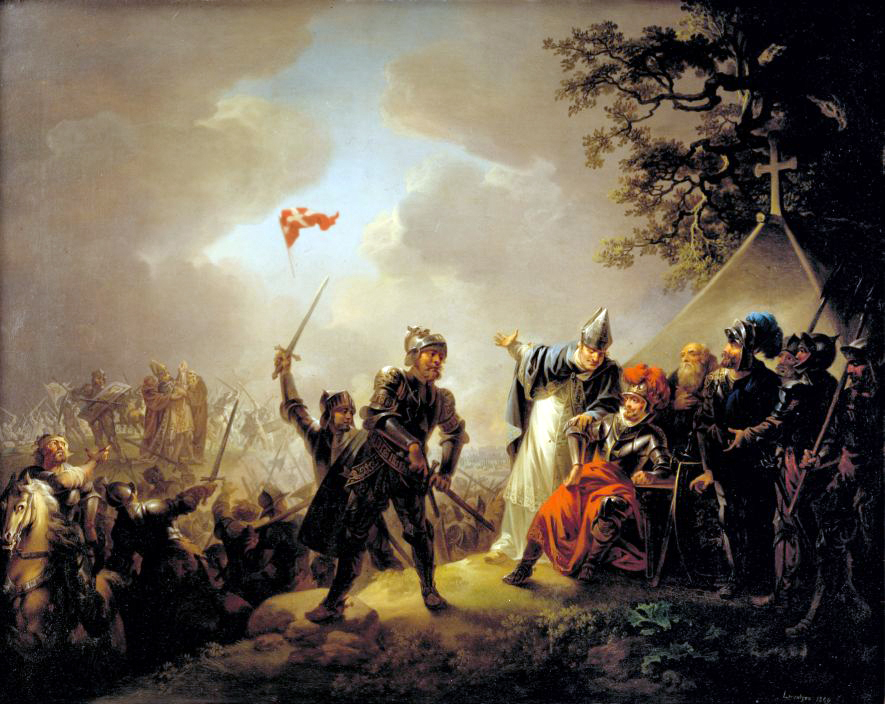
After Valdemar’s final victory over the Estonians in 1224, a stone cathedral was built near the castle and the Toompea became the main center of Danish secular and ecclesiastical government in Estonia. Tallinn has the best harbor on the Estonian coast and it soon attracted German merchants, who settled on the lower ground between the Toompea and the harbor, creating a commercial Lower Town. In 1285 the city, known to the Germans as Reval, joined the Hanseatic League and Germans continued to dominate the city’s economy until the twentieth century. Outside Tallinn, most of the land was parceled out not to Danes but to Saxon lords, who paid a land tax to the Danish crown.
The Fall of Denmark’s Baltic Empire
The failure to follow up conquest with occupation and settlement quickly doomed Denmark’s Baltic empire. Denmark’s increasingly obsolescent fleet could not dominate the Baltic Sea lanes, and neither could it challenge the power of the Germans on land. The lands won during the Wendish Viking crusades were conquered by German princes even before Valdemar’s death and in 1346 Denmark sold Estonia to the Teutonic Knights after a native uprising.
The Swedish Viking Crusades
Swedish involvement with the Viking crusades was, if anything, an even more naked land-grab than was Denmark’s. Like the Danes, the Swedes had a pirate problem: in their case the pirates were Estonians from the island of Saaremaa (Ösel in Swedish), Finns from Karelia (eastern Finland), and Curonians from modern Latvia, all of them pagan peoples. The Swedes, in turn, raided their persecutors, plundering and gathering tribute Viking-style, much as they had been doing for centuries.
The Swedes were also competing for influence in the region with Novgorod, which was the most important center for the lucrative fur trade. Swedes were as welcome as any other merchants to visit Novgorod to trade, but the city was powerful enough to prevent them raiding in Russia and gathering furs as tribute as they had done in the Viking Age. The Swedes now sought to profit from Novgorod’s fur trade by controlling the Gulf of Finland, which gave the city its ‘window on the west’, and by plundering Novgorodian ships, as happened in 1142 when a Swedish fleet captured three ships from Novgorod and killed 150 merchants. To secure its access to the Gulf, Novgorod began the conquest and conversion to Orthodox Christianity of the Karelian Finns, and retaliated against Swedish raids on its territory by raiding the shores of Lake Mälaren.
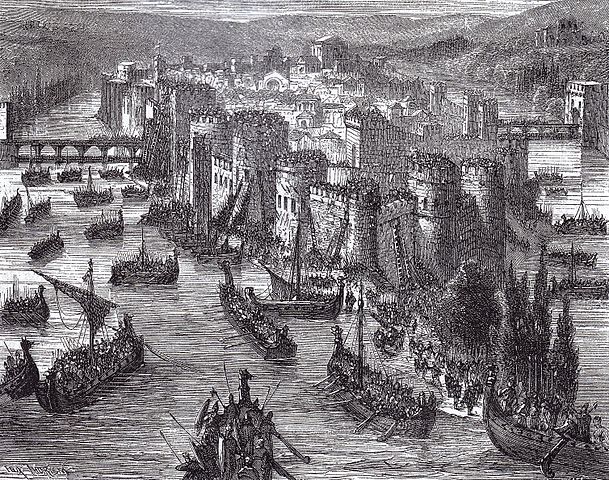
The Justification of the Crusades
After one raid they carried the church doors of the royal town of Sigtuna back to Novgorod. The Swedes countered Novgorod’s influence in Karelia with their own wars of conquest and conversion in Finland, which they justified by using the terminology of crusading. Because of its desire to limit the influence of the Orthodox Church, the Catholic Church supported the Swedish expeditions, but they were never given papal sanction like the Viking crusades to the Holy Land or the Wendish and Livonian Viking Crusades, and the Swedish crusaders were never offered the same spiritual rewards.
Later tradition has it that the first Swedish crusade in Finland was led by King Erik IX (r. 1155–60), sometime around 1157. Erik is said to have brought the whole of the south-west of Finland under Swedish rule and to have converted the conquered Finns to Christianity. When Erik returned home he left behind a missionary bishop Henry of Uppsala who was later martyred by the Finns. Erik may well have campaigned in Finland, but the story of the crusade was probably invented as part of the cult that developed around his memory after he was murdered by rebel nobles as he left church after attending Mass on Ascension Day (18 May) 1160. Sweden was by that time the only Scandinavian kingdom without a royal saint, so it suited his successors to encourage his veneration as a martyr.
The Swedish Conquest of Finland
The Swedish conquest of Finland was probably begun a long time before Erik’s reign, as place- name evidence suggests that Swedes had colonized the south-west coast around Turku (Swedish Åbo) as early as the mid-eleventh century, and was a slow process marked by frequent campaigns and many reverses. Even in the late twelfth century Sweden’s hold on south-west Finland was not secure. In a letter to a Swedish archbishop, Pope Alexander III (r. 1159–81) complained that: ‘the Finns always promise to obey the Christian faith whenever they are threatened by a hostile army… but when the army retires they deny the faith, despise the preachers and grievously persecute them.’
Because of their frequent backsliding, Pope Gregory IX called for a formal crusade against the Finns, but the Swedes ignored it and instead attacked Novgorod in 1240 only to be defeated by Alexander Nevsky at the Battle of the Neva. The Swedish conquest of Finland was finally secured by the so-called Second and Third Swedish Viking Crusades.
The Second Swedish Crusade
The Second Swedish Crusade (c. 1248–50), led by the mighty aristocrat Birger Jarl, brought the Tavastia region of central Finland under firm Swedish control, while the Third Swedish Crusade (1292–3), aimed unashamedly at Christian Novgorod, conquered Karelia, ended the activities of Orthodox missionaries there, and established a castle at Vyborg (now in Russia). The Swedes hoped this would be a base from which to extend their conquests to the mouth of the Neva and cut Novgorod off from the Gulf of Finland. Years of raid and counter-raid followed until the Treaty of Noteborg in 1323 established a frontier between Swedish Finland and Novgorod, which left Novgorod in control of the Neva.
The Swedes did eventually achieve their ambition of winning control of the Neva and cutting Russia off from the Gulf of Finland in 1595, only to lose it in 1702 to Peter the Great, the founder of St Petersburg. Unlike the ephemeral Danish conquests in the Baltic, the Swedish conquest of Finland had long-lasting consequences. This was in large part because here conquest was followed by settlement. In the wake of the crusaders, large numbers of Swedish peasant farmers, fleeing the imposition of serfdom at home, settled in southern Finland. Even though Russia ended Swedish rule in 1809, Finland still has a Swedish-speaking minority and recognizes Swedish as one of its official languages.
Excerpted with permission from Northmen: The Viking Saga: 793-1241 AD by John Haywood. Published by Thomas Dunne Books. Copyright 2016.
DR. JOHN HAYWOOD is a Cambridge-educated expert on the history of Dark Age Europe. He is also the author ofThe New Atlas of World History, The Penguin Atlas of the Vikings, and Great Migrations
